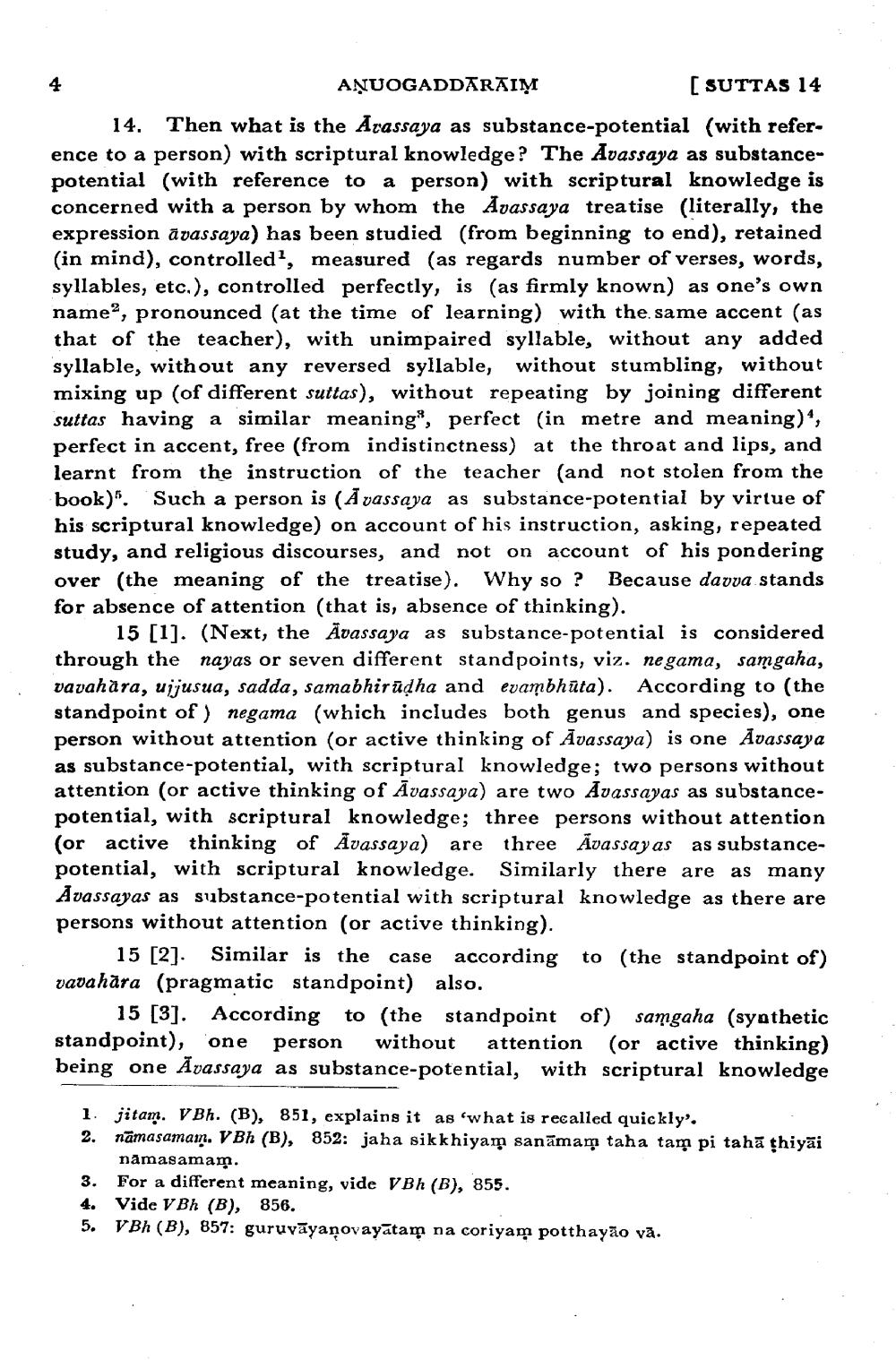________________
AŅUOGADDĀRĀIM
[SUTTAS 14
14. Then what is the Arassaya as substance-potential (with reference to a person) with scriptural knowledge? The Avassaya as substancepotential (with reference to a person) with scriptural knowledge is concerned with a person by whom the Avassaya treatise (literally, the expression āvassaya) has been studied (from beginning to end), retained (in mind), controlled, measured (as regards number of verses, words, syllables, etc.), controlled perfectly, is (as firmly known) as one's own name?, pronounced (at the time of learning) with the same accent (as that of the teacher), with unimpaired syllable, without any added syllable, without any reversed syllable, without stumbling, without mixing up (of different suttas), without repeating by joining different suttas having a similar meaning, perfect (in metre and meaning), perfect in accent, free (from indistinctness) at the throat and lips, and learnt from the instruction of the teacher and not stolen from the book)". Such a person is (Ā vassaya as substance-potential by virtue of his scriptural knowledge) on account of his instruction, asking, repeated study, and religious discourses, and not on account of his pondering over (the meaning of the treatise). Why so ? Because davva stands for absence of attention (that is, absence of thinking).
15 [1]. (Next, the Avassaya as substance-potential is considered through the nayas or seven different standpoints, viz. negama, samgaha, vavahāra, ujjusua, sadda, samabhir ūdha and evambhūta). According to the standpoint of) negama (which includes both genus and species), one person without attention (or active thinking of Āvassaya) is one Avassaya as substance-potential, with scriptural knowledge; two persons without attention (or active thinking of Āvassaya) are two Avassayas as substancepotential, with scriptural knowledge; three persons without attention (or active thinking of Avassaya) are three Avassayas as substancepotential, with scriptural knowledge. Similarly there are as many Avassayas as substance-potential with scriptural knowledge as there are persons without attention (or active thinking).
15 [2]. Similar is the case according to (the standpoint of) vavahāra (pragmatic standpoint) also.
15 [3]. According to (the standpoint of) samgaha (synthetic standpoint), one person without attention (or active thinking) being one Avassaya as substance-potential, with scriptural knowledge
1. jitam. VBh. (B), 851, explains it as 'what is recalled quickly'. 2. nāmasamam. VBh (B), 852: jaha sikkhiyam sanāmam taha tam pi tahā ghiyāi
namasamam.
For a different meaning, vide VBh (B), 855. 4. Vide V Bh (B), 856. 5. VBh (B), 857: guruvāyaṇovayātam na coriyam potthayão vā.




